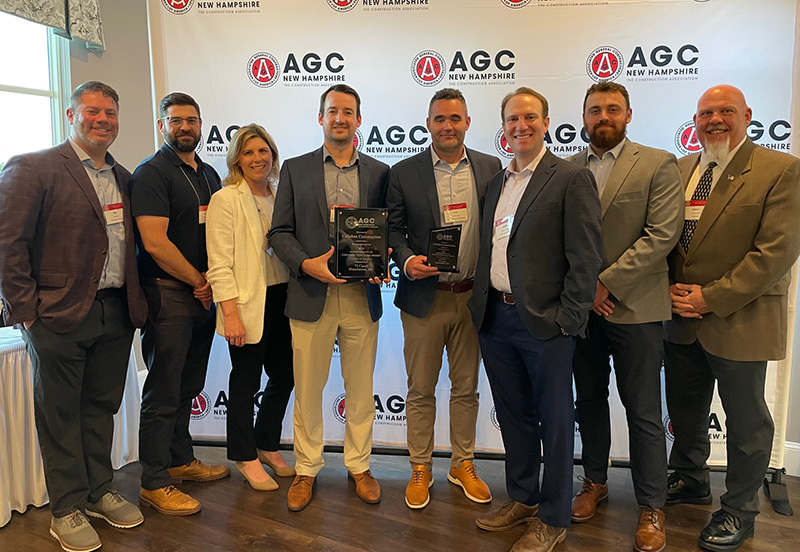News: Construction Design & Engineering
Posted: January 2, 2008
"Dont be afraid to fire your customer"
The media regularly carry news of layoffs, people getting fired by their employers. It's also not uncommon to hear of vendors or suppliers getting axed; a firm firing its ad agency, for example. Rarely, however, if ever, do you hear about a company firing a customer. And that's too bad, because firing selected clients is one of the best ways I know to significantly improve your bottom line.
Many years ago, renown construction industry consultants FMI Corp. coined the phrase, "Volume kills, profit thrills." The message FMI was trying to get across to contractors was that it doesn't matter how many large projects you perform or how much revenue you generate, if your projects are ultimately not profitable you'd just as well sit in the office and drink beer all day.
That important lesson extends to all businesses, not just builders. Simply because someone wants to hire you or buy your product doesn't necessarily mean it's in your best interests to do business with them.
A business should always strive to generate more prospective customers than it has the ability to service. Doing so allows it to be selective and do business with those that offer it the best opportunities to make money.
First, before actively pursuing a new customer, do your homework. Do they have a legitimate need for your product or service? Check their credit history; do they pay their bills on time? What about their litigation record?
Next, meet with them and get a sense of their priorities. Are they only interested in price? If so, a red flag should immediately go up. Not only is it likely they'll always be beating you up for a lower price, but the first time someone offers them a better deal they'll leave you so fast all you'll notice is the breeze.
However, if they view quality and service as important considerations—and you're capable of providing those—the relationship has potential.
But even with the best due diligence, mistakes will happen. In my work producing promotional newsletters for more than 100 contractors around the country, I have fired more than 25 clients over the last 13 years. The reasons vary: an inability to meet our deadlines, repeatedly not providing the necessary materials in the required format, not adhering to payment terms, to name the most common.
In each case, when the problems first arose, I explained the issue to the client, the difficulties it created, how to correct it, and the consequences if it continued. Given that we were fulfilling all the commitments we'd made to our clients, we expected the same in return.
The small percentage of clients who, after this discussion, continued to cause problems, were politely fired. I wished them well and bid them, "Adios." Not one complained; each knew he had been given fair notice, yet failed to correct the situation.
In your own business you know, or you should, who your problem customers are. It may be the guy who never fails to make you jump through hoops to keep his business. It may be the woman who is so nasty to your staff that they threaten to quit. It could be the customer who never pays in less than 120 days, or the one who returns half the orders you ship to him.
I'm not suggesting you become arrogant or difficult to do business with. I am saying, however, that it's important to identify those customers who, for whatever reason, compromise your ability to provide the best price, quality and service to the rest of your clients. Fire those customers! You'll discover your life will be less stressful and your business will be healthier and more profitable.
David Wood is a marketing consultant, Deering, N.H
MORE FROM Construction Design & Engineering
Nobis Group awards Robinson and Moreira STEM scholarships
Concord, NH Nobis Group, a 100% employee-owned consulting firm specializing in engineering and environmental solutions across the Northeast, has named the recipients of its 2025 STEM Scholarship: Andie Moreira of

Columns and Thought Leadership

The design-build advantage: Integrated interior design solutions - by Parker Snyder
When it comes to corporate interior spaces for both commercial and industrial projects, partnering with a design-build firm with in-house interior design services can offer clients many benefits. Unlike traditional delivery methods where interior designers operate independently from the design and construction teams, often creating a longer project timeline as cost negotiations and revisions ensue

The rise of incubators and co-working spaces: The latest in life sciences - by Matt Combs
In recent years, the life science industry has witnessed a shift in how companies operate and innovate. One of the key driving forces behind this transformation is the emergence of incubators and co-working spaces specifically tailored to meet the unique budget and schedule needs of startups.

Ask the Electrician: Is summer a prime time for commercial electrical maintenance?
The answer is “Yes!” While January marks the official new year, many businesses view September as a fresh start. This makes summer an ideal time for commercial property owners to schedule long-term electrical maintenance projects.

Careers in Construction Month focus on training and safety - by Joe Camilo
October is Careers in Construction Month, and rarely has it been more consequential. According to our chapter’s national parent organization, the construction industry needs to attract half-a-million new workers in the coming year to meet demand. Addressing that need is a huge job, but we at ABC MA are trying to do our part.







